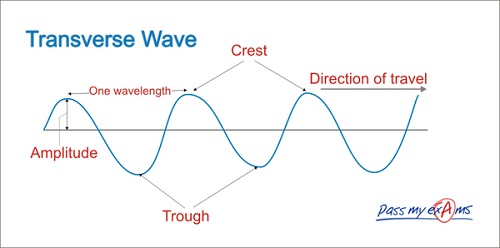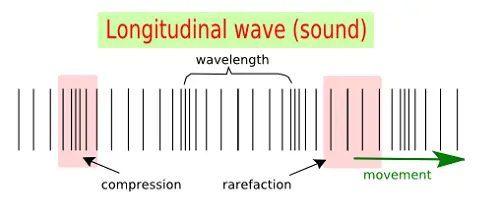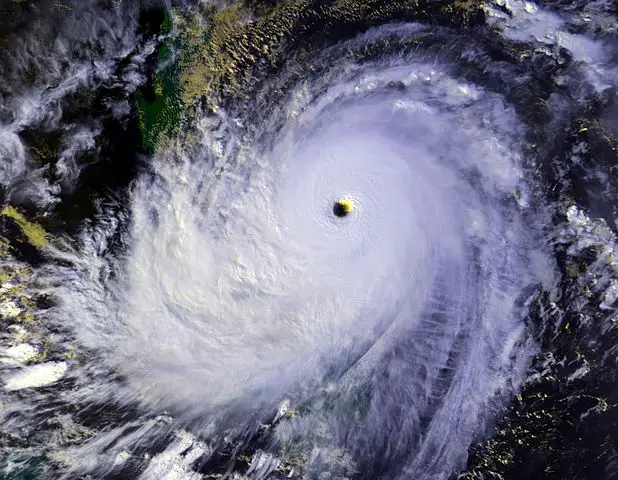What is Transverse wave?
In transverse wave the oscillations are perpendicular to the direction of energy transfer. The ripples on a water surface are good examples of transverse wave in that as the waves travels in one direction ,it ends up creating an up and down motion on the water surface. It is always characterized by a particle motion being perpendicular to wave motion. A transverse wave may consist of more than one pulse and this particular transverse waves that consist more of one pulses come up as a result when the source of wave oscillates for about some equilibrium position for longer periods of time. Under this condition, the initial pulse is followed up closely by another pulse of opposite displacement. Hence this series of alternating pulses are referred to as wave train. These waves require a relatively rigid medium in order to transmit their energy hence they cannot propagate in a gas or a liquid because there isn’t any mechanism for driving motion perpendicular to the propagation of the wave. Light is an example of transverse waves since it can travel through a vacuum and does not require any particles to bounce off.

Characteristics of transverse waves
- The waves are propagated in a direction right angle to the vibration of particles
- They can be polarized
- Transverse waves are propagated as crests and troughs
- In transverse waves the constituents of the medium oscillate perpendicular to wave motion causing change in shape.
What is Longitudinal wave?
This is a wave in which particles of the inanimate medium vibrate about their mean position to the direction of propagation of the disturbance. In a longitudinal wave, each particle of matter vibrates about its normal rest position and along the axis of propagation, and all particles participating in the wave motion behave in the same manner, except that there is a change in the manner of phase of vibration. During the flow of the wave compression and rarefaction of the medium takes place and the distance between this compression and a rarefaction is termed as wavelength. In this kind of wave the vibration of particles of the medium are in the direction of the wave propagation. This longitudinal wave is usually generated in elastic mediums and Wavelength, amplitude, period, frequency, and wave speed can easily be defined in this type of wave. A sound wave is a classic example of a longitudinal wave. As the sound wave moves from the lips of the speaker to the ear of the listener, particles of air vibrates back and forth on the same direction. The sound bounces off the particles in a back and forth motion.

Characteristics of longitudinal waves
- Longitudinal waves have compressions and rarefactions whereby compression is a region in a longitudinal wave where the particles are closest together whereas rarefaction is a region in a longitudinal wave where the particles are furthest apart
- Polarization of the medium in longitudinal waves does not take place at all
- Longitudinal waves are characterized by displacement of its medium as parallel to the propagation of the wave.
- These waves require a medium of for their propagation hence they cannot propagate through vacuum
Possible Similarities between longitudinal and transverse waves
- They both do not displace mass
- They both characterize amplitude. Amplitude is the half distance measured from crest to trough
- Both longitudinal and transverse have got wavelength
- They are both similar in that they transfer energy in the form of waves.
Summary points on similarities between transverse and longitudinal wave
- A longitudinal wave is seen best in a spring that is placed hanging on a stand. You’ll notice that the disturbance will move in the same direction in which the spring was pulled. If the spring is pulled up and down, the wave will also move up and down.
- Transverse waves has got troughs and crest whereby crest is the highest point the medium rises to and trough is the lowest point the medium sinks to.
- Longitudinal waves have compressions and rarefactions in which compressions is where the particles are closer together whereas rarefactions is when the particles are further apart.
- A transverse wave is a wave where the movement of the particles of the medium is perpendicular to the direction of propagation of the wave.
Author: Victoria Jones
Victoria Jones has a degree in psychology from UK. She is an expert with over 4 years experience in writing and content strategy. She has written over 50 articles, some of which have been featured in local daily’s and magazines.












Leave a Reply